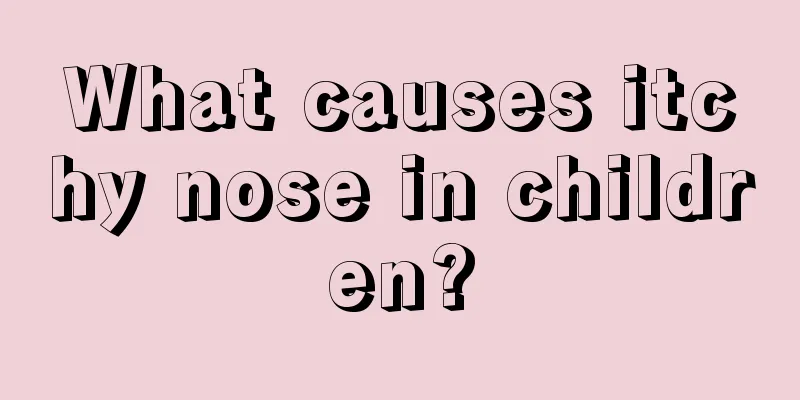What is the reason for a baby's small fontanelle?

|
The fontanelle is the gap in the baby's skull left when the skull bones are not tightly connected. The fontanelle is an important window that reflects the baby's development and physical health. Moreover, the characteristics of each baby's fontanelle are different. Some parents find that their baby's fontanelle is smaller than that of other children, and they are worried that there is something wrong with their child. So, what is the reason why babies have small fontanelles? Let’s take a closer look at it below. A small fontanelle mainly means that the fontanelle is only as big as the tip of a finger. It may be caused by microcephaly or premature craniosynostosis. In particular, premature closure of the sagittal suture will cause the baby's head to become longer and narrower, forming a head deformity called scaphoid, with a protruding occipital region, a wide forehead, and a small or invisible anterior fontanelle.What to do if your baby's fontanelle is small If the baby's fontanelle is too small, it is necessary to measure the head circumference regularly, that is, to observe whether the head circumference is within the normal range before the baby is one month old. The growth rate of the head circumference should be checked every month or every two months and compared with that of normal babies to see if there is any obvious lag. If the baby's head circumference develops normally and continues to do so after 3-4 months of follow-up, even if the fontanelle is a little smaller, it will not affect the development of the brain. However, if the head circumference growth value is also abnormal, such as the head circumference is 2 standard deviations smaller than that of babies of the same age and gender, and the baby's ability to lift his head, sit, walk, and speak cannot keep up with babies of the same age, it means that his brain development may be delayed. At this time, you should go to the hospital to conduct developmental assessment and intelligence testing of your baby. If necessary, special examinations such as CT and MRI of the brain can be performed.
For newborn babies, the skull ossification is not complete, so the skull bones are not well connected to each other. Some places are connected by connective tissue membranes, which are called fontanelles. The fontanelles of children are divided into anterior and posterior. The anterior fontanelle is a diamond-shaped gap formed by the two frontal bones and the parietal bones. It is 1.5×2 cm in size at birth and increases with the increase of head circumference. It gradually ossifies after 6 months and is completely closed before 18 months. The posterior fontanelle is a small triangular gap formed by the two parietal bones and the occipital bone. Some are closed or very small at birth and are completely closed within 3 months. The fontanelle we usually refer to is the anterior fontanelle. The fontanelle is very important for babies under 2 years old, as it is a window that reflects childhood diseases. If the fontanelle closes late, it indicates that the baby has bone development and calcification disorders. If accompanied by delayed teething, short stature, and delayed bone age, the baby may suffer from dwarfism or cretinism due to hypothyroidism. If accompanied by irritability, sweating, night terrors, square head, and rib valgus, the baby may suffer from rickets. In addition, increased intracranial pressure such as hydrocephalus and brain tumors can also cause delayed closure of the fontanelle.If the fontanelle closes prematurely and the head circumference is significantly smaller than normal, it may be due to brain maldevelopment. Some normal children have a fontanelle that is only the size of a fingertip when they are 5 to 6 months old. It seems to be closed, but in fact it has not ossified, so it cannot be considered that the fontanelle is closed prematurely. When your baby is sick, touching the fontanelle can have predictive significance. If the fontanelle is full or obviously protruding, it indicates hydrocephalus, encephalitis, meningitis, subdural edema, tetracycline and vitamin A poisoning, etc.; if the fontanelle is obviously sunken, it is common in severe dehydration caused by diarrhea in children. At this time, you should seek medical treatment in time. |
<<: Do children need to be given injections if they bite someone?
>>: Can Iodine be used on baby wounds?
Recommend
Why do children always have runny noses? This is a must-read for mothers
Children need careful care so that they can grow ...
What are the clinical manifestations of craniosynostosis?
Craniosynostosis is a common growth and developme...
Why do children sleep restlessly and always wake up?
Generally speaking, children sleep much better th...
Can neonatal pulmonary hemorrhage be cured?
Neonatal pulmonary hemorrhage is very serious and...
Introduction to childhood mania
Childhood mania. In the rapidly developing 21st c...
Methods of massage for children with fever
Massage is a traditional treatment method in Chin...
What is the reason for excessive sweating on children’s heads?
When the child is sleeping, parents often cannot ...
What causes children to have eye bags and dark circles?
The physical health of children is the most impor...
Introduction to treatment methods for baby's eyes tearing up when exposed to wind
Many new parents are not very experienced in feed...
Why do children cough at night but not during the day?
Coughing is one of the most common symptoms in pe...
What is the best age for children to go to school?
Going to school is a necessary step in the proces...
At what months can babies crawl?
Many mothers observe their children's various...
What are the types of telangiectasia in children?
Telangiectasia is a common disease that can affec...
How to stop diarrhea quickly in children
Children are the little elves in the family and a...
10 tips for managing your baby's toys
The child has more and more toys, and the mother ...









